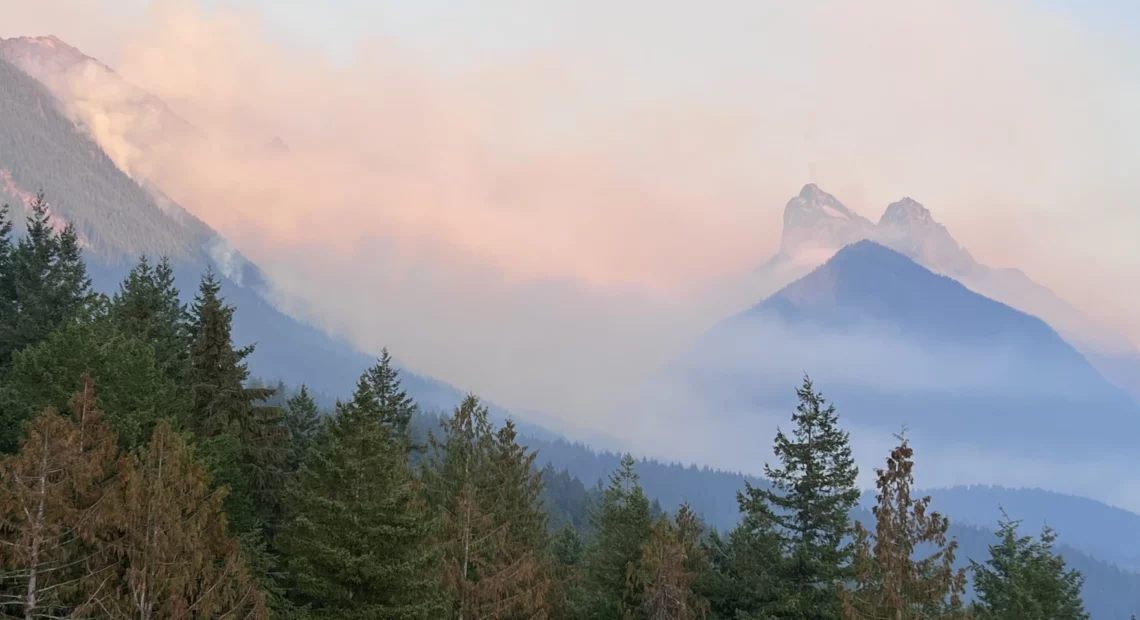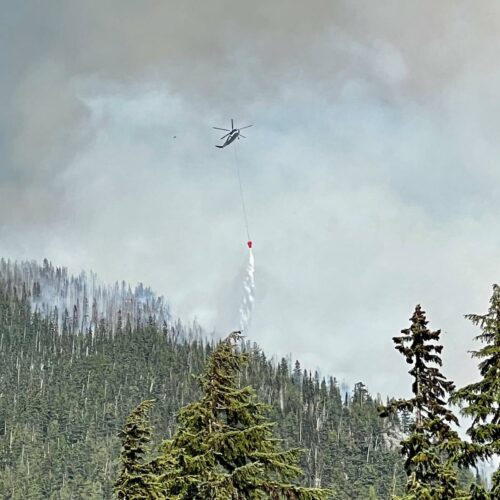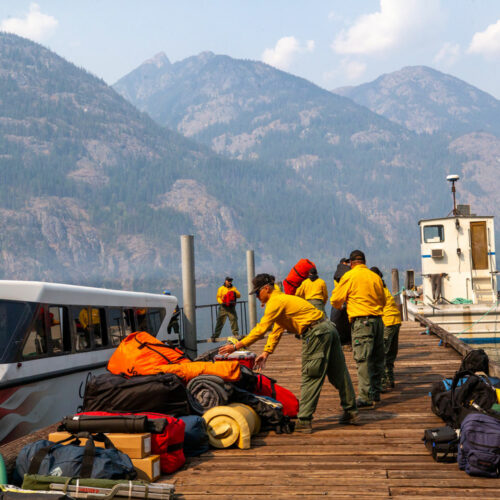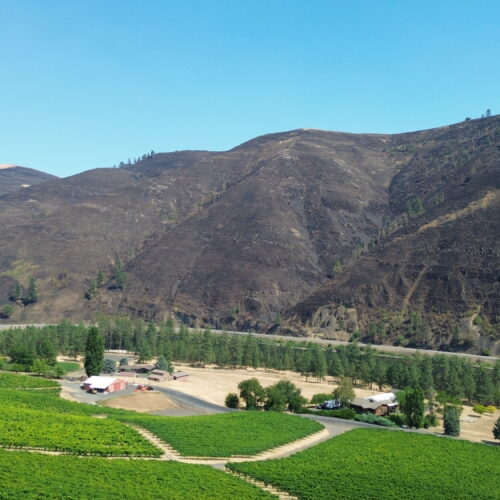Fewer acres in Washington burned so far this year than in the previous 10 years. Modernized fire equipment, quick responses to fire starts, and increasing forest health programs helped lead to a less catastrophic fire season, said Commissioner of Public Lands Hilary Franz.
As this year’s fire season draws to a close, around 140,300 acres have burned so far across the state. Two large wildfires – the Bolt Creek Fire near Skykomish, Washington, and the Goat Rocks Fire near Packwood, Washington – continue to burn, as firefighting crews await season-ending precipitation.
Fewer fires starting in the first place helped keep the number of acres burned low. Over the last few years, the state Department of Natural Resources has educated people that most wildfires are human-caused, Franz said.
“Preventing these fires in the first place has helped us keep not only the number of fires down, but also the destruction and damage and the risk,” Franz said.
Slightly fewer wildfires also burned in Oregon compared to the 10-year average, said Jessica Prakke, a public affairs specialist with the Oregon Department of Forestry. Across Oregon so far this season, 1,790 fires, totalling 362,166 acres, burned.
On Oregon Department of Forestry-managed land, much of that is due to fewer human-caused wildfires combined with a late start to the fire season attributed to fewer fires, Prakke said.
However, she said, the fire season hasn’t ended yet and asked people to continue to recreate responsibly to avoid late-season fires.
In Washington, state legislation from 2021 funded firefighting equipment purchases, including 16 dozers and four firefighting excavators.
In addition, the department purchased two Kodiak multi-mission airplanes, which will conduct air attack, command and control, and mapping missions, Franz said. These aircraft will replace bullet-riddled Vietnam War-era helicopters, she said.
“With the ability now of these new aircraft to detect fires after lightning strikes and see fires through smoke, these aircraft will be useful in mapping large-scale fires,” Franz said.
For the second year in a row, Franz said, the department has kept at least 94% of wildfire starts under 10 acres, an attempt to reduce the destruction and number of large-scale fires.
While the fire season got a late start in 2022, October has had warm, dry conditions without season-ending precipitation, said Russ Lane, Wildland Fire Management Division manager for the department.
This year’s wet, cool spring allowed grasses and other fine fuels to grow more robustly, which could have rapidly fed any fires that sparked. In addition, this year’s summer was the driest on record, Lane said, with lightning strikes sparking several fires.
At the start of this year’s fire season, Lane said, fire officials placed equipment in strategic locations so that firefighters could quickly get to fires as they sparked.
Franz said keeping fires small means taxpayers are paying less because they don’t have to spend money for large-scale firefighting and disaster relief.
“The investment we have now is actually going to reduce costs because we can get on those fires quickly because we have the resources up front. We can preposition equipment. We can have the trained firefighters. We can have the air resources. Then we can get to that goal of 94% of fires under 10 acres,” Franz said.
Moreover, increasing forest health programs will help keep fires small, Franz said. Those sorts of programs are increasingly needed on the westside of the state, she said, in addition to focused forest health programs in Central and Eastern Washington.
Forest health programs are rapidly accelerating east of the Cascade Mountains, Franz said, with 3 million acres of forest lands under assessment in private, state, tribal, and federal forests.
“We also have a lot of work to do on the westside. We now see 30-40% of our fires on the westside,” she said.
This year was an anomaly in recent fire years, which will continue to get worse as the climate changes, Franz said.
“We’re going to continue to see increasing fire events as we see hotter, drier temperatures earlier in the year and lasting longer,” Franz said.




















